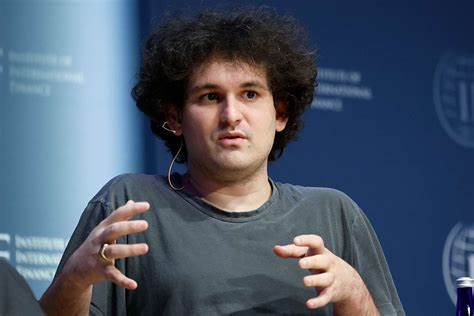Sam Bankman-Fried, a prominent figure in the financial world, is facing the possibility of a lengthy prison sentence following his conviction for one of the largest white-collar crimes in history. Scheduled for sentencing in Manhattan federal court, the outcome of the hearing will determine Bankman-Fried’s fate, with prosecutors advocating for a sentence ranging from 40 to 50 years.
Despite Bankman-Fried’s appeal against his conviction, it is expected that he will be incarcerated, leaving the decision of the sentence in the hands of Judge Lewis Kaplan of the Southern District of New York. The prosecution’s recommendation of 40 to 50 years has been met with strong opposition from Bankman-Fried’s defense team, who argue that such a sentence would be excessively harsh for a non-violent first-time offender. Instead, they propose a maximum sentence of six and a half years, emphasizing mitigating factors such as Bankman-Fried’s age and lack of prior criminal history.
Judge Kaplan, in determining the appropriate sentence, will consider various factors, including recommendations from the Probation Department, as well as Bankman-Fried’s potential for future criminal behavior. While sentencing guidelines offer a framework, there exists considerable discretion for the judge to exercise in reaching a decision.
In their sentencing memorandum, prosecutors characterized Bankman-Fried’s crimes as extraordinary and urged for a punishment that reflects the severity of his actions. They challenged the defense’s portrayal of Bankman-Fried as altruistic, instead highlighting his greed and reckless behavior with investors’ funds.
Bankman-Fried’s defense team, led by Marc Mukasey, condemned the prosecution’s recommendation as excessive and accused them of attempting to inflict undue harm on their client. They emphasized the detrimental impact of such a lengthy sentence on Bankman-Fried’s well-being and questioned the necessity of such punitive measures.
As the sentencing hearing approaches, tensions are high, with both sides presenting compelling arguments in support of their positions. The outcome will not only determine Bankman-Fried’s immediate future but will also serve as a reflection of the justice system’s approach to cases of white-collar crime and the balancing of punishment with rehabilitation and societal reintegration.
Pre-trial conduct
Sam Bankman-Fried’s pretrial conduct, characterized by actions that tested the boundaries of his bail conditions and clashed with the norms of the criminal justice system, may have significant repercussions on his sentencing. Unlike many defendants in white-collar cases who are advised to bolster their public image through charitable activities or community involvement, Bankman-Fried faced limitations due to being under house arrest at his parents’ home in Palo Alto, California.
Throughout the pretrial period, Bankman-Fried’s actions, including his interactions with the press and the release of private writings belonging to his former colleague and ex-girlfriend, Caroline Ellison, drew scrutiny from both prosecutors and the court. These actions ultimately led to Judge Kaplan siding with prosecutors and revoking Bankman-Fried’s bail in August 2023, resulting in his confinement to the Metropolitan Detention Center in Brooklyn.
Howard Fischer, a legal expert, suggests that Bankman-Fried’s disregard for the norms of the criminal justice system, as evidenced by his pretrial conduct, could negatively impact his sentencing. Fischer highlights the significance of Bankman-Fried’s behavior as a factor that may influence the judge’s decision.
Furthermore, the testimony provided by Ellison and other former executives who cooperated with prosecutors and testified against Bankman-Fried could further influence the sentencing process. These individuals, having pleaded guilty to similar federal charges, may provide additional insight into Bankman-Fried’s actions and potentially contribute to the court’s assessment of his culpability and character.
In summary, Bankman-Fried’s conduct leading up to his trial, characterized by actions that contravened the expectations of the criminal justice system, may cast a shadow over his sentencing proceedings. The court is likely to consider these factors alongside other mitigating and aggravating circumstances in determining an appropriate sentence.
Calculating the FTX loss
The calculation of losses incurred by customers of Sam Bankman-Fried’s now-defunct crypto exchange FTX is a contentious issue in his legal proceedings, particularly in relation to its potential impact on his sentencing. In cases of white-collar crimes, the magnitude of financial losses often plays a significant role in determining the severity of the sentence.
Prosecutors in Bankman-Fried’s case have estimated the total losses, including customer funds, losses incurred by investors in FTX, and lenders to its sister trading house, Alameda Research, to be “conservatively” over $10 billion. This substantial figure reflects the extensive ramifications of FTX’s collapse, which occurred practically overnight in November 2022.
However, the defense has countered this assessment by highlighting the possibility of FTX customers being reimbursed due to the increased value of the cryptocurrency holdings since the platform’s demise. They argue that the prospect of customers receiving full restitution should be a mitigating factor in determining Bankman-Fried’s sentence.
Nevertheless, legal experts caution that the return of funds to customers does not necessarily absolve Bankman-Fried of responsibility for the initial losses. Even if customers are fully compensated, the gravity of Bankman-Fried’s actions and the harm caused to investors and lenders cannot be overlooked.
Howard Fischer, a legal expert, analogizes the situation to winning a lottery ticket after committing a theft, emphasizing that the restoration of funds does not negate the wrongdoing that led to their loss in the first place.
John Ray, the bankruptcy expert overseeing FTX’s affairs post-collapse, echoes this sentiment, asserting that the return of value to stakeholders is not guaranteed and is contingent upon the efforts of his team to salvage what remains of Bankman-Fried’s “sprawling criminal enterprise.”
Ray’s assessment underscores the complex and precarious nature of FTX’s financial situation, emphasizing that the platform Bankman-Fried left behind was neither solvent nor secure. This assertion challenges the defense’s argument that the absence of financial harm to customers, lenders, and investors should mitigate Bankman-Fried’s culpability in the eyes of the court.
As Bankman-Fried’s sentencing approaches, the dispute over the calculation of losses and their implications for his culpability and punishment underscores the intricate legal considerations at play in cases of white-collar crime. The outcome of this dispute will likely shape the court’s assessment of Bankman-Fried’s actions and the severity of the sentence ultimately imposed.
